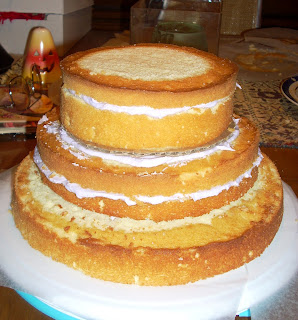I've been thinking more about
Mother Earth News, which I
mentioned a few weeks ago. I've decided that what I like best about their
Web site is how it works perfectly with their magazine.
As a magazine,
Mother Earth News provides a sampler platter of articles about everything from global warming to how to build a shed out of sandbags. Its content certainly covers the interests of its readers (practical tips for living sustainably), but it also exposes its readers to fresh ideas.
The Web site, on the other hand, allows for personalization. Online, a reader can search for articles or follow blogs on favorite topics. It's a great follow-up resource: if you read something about chicken feed in the magazine, you can always go online and find ten chicken feed articles to help you choose the best grain mix.
I think that
Mother Earth News provides a great model for magazines in the digital era; the magazine serves to introduce readers to new ideas while the Web site allows readers to deepen their knowledge of certain topics. And while the Web site is a great resource, it hasn't replaced the magazine.
MEN has led me to think about the importance of magazines in the age of the Internet. I've been hearing a lot of talk recently about the impending death of print journalism. As
Conde Nast cuts magazines and
magazine ad revenues drop and
online publications consider charging readers for content, experts bemoan how people expect to get all their content online for free, how we've all abandoned magazines and newspapers in favor of
Twitter and niche blogs and personalized
RSS feeds.
This may be true for some readers, but I would never want to give up my magazines in favor of reading online. Magazines provide something that, in this age of personalized, digital media, we don't get everyday: the pleasure of unexpected discovery.
I love magazines and always have. In high school, I subscribed to
Seventeen and
National Geographic. These days, I subscribe to
Vogue,
Kansas! Magazine, and
The New Yorker, and I buy issues of
Mother Earth News,
Vanity Fair, Poetry, and
Glamour a few times a year.
What I love about magazines is how they surprise me. I always have an idea of what might show up in the pages of any publication, but I never know for certain what I'll find. I expect the editors to give me the regular features I'm used to, but I also trust them to nurture and publish interesting writing on new topics that I may or may not be interested in. In
Vogue, one month I'll read about Michelle Obama's favorite designers, and the next month I'll get a feature on LeBron James or an investigation into the uses of duck broth or a record of a reporter's trip to Baghdad.
LeBron James and duck soup aren't topics I would normally go out of my way to read about, but I'll definitely give them a chance when I read a magazine cover to cover. By reading gamely, I run the risk of being bored, but I'm also giving myself the chance to become fascinated with something new. In this way, I've learned a great deal about the world I live in.
The reason that I give every magazine article a chance is that ignorance is never aware of itself; there's no way to know that you don't know something until somebody tells you that you don't know it. That's where magazines come in. For example, I never knew that I cared about CEO compensation until I read a recent issue of
The New Yorker, and I never knew that I was invested in the future of biofuels until I cracked a copy of
Mother Earth News.
But hyper-personalized reading rarely interferes with ignorance. Increasingly, people have control over the media they experience every day. From Google searches to iPods to DVRs, we all have the opportunity to experience exactly what we want and to block out whatever we don't want. While this can be a good thing--I've loved my iPod from the first day I wiggled it out of its little plastic box--it also protects us from experiencing new and potentially challenging ideas. By relying exclusively on personalized media, we run the risk of forgetting that we don't know all there is to know
Journalism has always had more than one purpose: it can entertain us and reassure us, and it can also offer us variety so that we stay informed, open-minded, and aware of the limits of our own knowledge. I believe that it's vital for an individual to remember that "There are more things in heaven and earth [. . .] Than are dreamt of in [our] philosophy," and periodicals do an exemplary job of keeping our minds exercised and open.
Besides, reading a magazine or listening to the radio is just so much more textured, more compelling, and more fun. Who wants to re-experience only the media that we already know about? It's like watching
The Love Boat every day
for the rest of your life, or listening to Neil Diamond's
Greatest Hits on repeat for years, or having to re-read the same pundit's take on abortion or health care for decades.
No matter how much we love something, some song or show or idea, everyone has to admit that variety is the spice of life and, more importantly, the spice of the mind. Before we cancel our magazine subscriptions, we have to remember the importance and the thrill of new discovery: there's nothing like finding out that you love salsa music while scanning through radio stations, or learning about water clocks on the History Channel because there's nothing else on, or getting interested in chicken feed because you read a magazine when you're stuck on the subway. Which is why I, for one, hope that magazines stick around for a long, long time.


























































